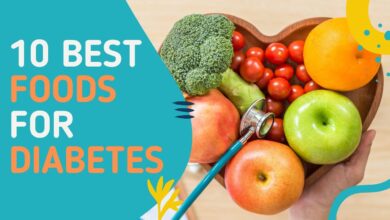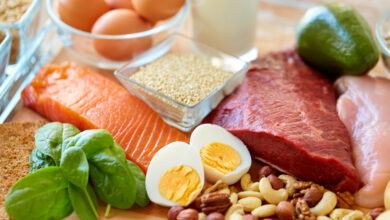How to Choose Keto Foods for Diabetes Management: Proven Diet Tips for Blood Sugar Control

Living with diabetes often feels like walking a tightrope. Every meal, snack, and even beverage you consume has the potential to tip the balance of your blood sugar, making you feel either energized or completely drained. For millions across Africa, Europe, and around the globe, managing diabetes isn’t just about medication—it’s about lifestyle. Among the diet options rising in popularity, the keto diet stands out as one that offers significant benefits.
But here’s the truth: while keto can help stabilize blood sugar and support weight loss, not every keto-approved food is safe for people with diabetes. Bacon, butter, and processed meats may fit the keto “low-carb” definition, but for someone managing diabetes, they could increase cardiovascular risks. So, the key is learning how to choose keto foods wisely, balancing both the principles of ketosis and the unique needs of diabetes care.
This in-depth guide will walk you through every detail: the science behind keto and diabetes, the foods to prioritize, the foods to avoid, cultural meal adaptations for Africa and Europe, smart grocery strategies, and practical tips for dining out without sabotaging your health. Each section is designed to help you make informed decisions and, most importantly, live a healthier, more empowered life with diabetes.
Understanding the Link Between Keto and Diabetes
The connection between keto and diabetes begins with how the body processes carbohydrates. Normally, carbs are broken down into glucose, which then enters the bloodstream. For people with type 2 diabetes, the body either doesn’t produce enough insulin or struggles to use it effectively, leading to glucose spikes and crashes. The keto diet flips this process upside down by significantly reducing carbohydrate intake—sometimes to less than 20–50 grams a day. This forces the body to rely on fat for energy, creating ketones, which fuel cells without pushing blood sugar up and down like a rollercoaster.
For diabetics, the appeal is clear: more stable blood sugar, fewer cravings, and better energy levels. Studies also suggest that keto may improve insulin sensitivity, making it easier for the body to use the glucose that’s already there. However, food choice matters. Too much saturated fat from butter or processed meats can strain the heart, while skipping vegetables for the sake of staying “keto” can leave you deficient in fiber and essential nutrients.
Think of keto as a road trip. The car (your body) needs fuel. Glucose is like cheap gas—burns fast but leaves you sputtering. Ketones are premium fuel—cleaner and longer-lasting. But if you fill the tank with the wrong oil (poor food choices), the engine still suffers. The trick is not just getting into ketosis—it’s choosing the right foods to thrive while you’re there.
Top Benefits of Keto for Diabetes Management
So, what makes keto appealing for diabetics? Here are the standout benefits:
1. Blood Sugar Control
Cutting carbs reduces post-meal glucose spikes, keeping blood sugar stable throughout the day.
2. Weight Management
Excess body weight is one of the biggest drivers of type 2 diabetes. By burning fat for fuel, keto helps shed pounds effectively.
3. Reduced Cravings and Hunger
High-fat, moderate-protein meals keep you feeling full longer, preventing overeating.
4. Improved Energy and Focus
With steady ketone supply, many report fewer energy crashes and clearer thinking.
5. Cardiovascular Support (when done right)
Replacing unhealthy fats with omega-3-rich foods like salmon and avocado improves cholesterol balance.
Imagine managing diabetes like managing money. Carbs are like small coins—you spend them quickly and constantly run out. Keto swaps coins for bills—you carry fewer but they last longer. That’s why keto, when tailored properly, gives diabetics better control over “spending” their glucose reserves.
Foods You Should Prioritize on a Keto Diet for Diabetes
Here’s your diabetes-friendly keto shopping list:
1. Non-Starchy Vegetables
These are the backbone of your plate. Spinach, kale, broccoli, cauliflower, zucchini, asparagus, and peppers are nutrient-rich and low in carbs. Their fiber slows digestion, keeping blood sugar steady.
2. Healthy Fats
Avocados, olive oil, coconut oil, nuts, and fatty fish like salmon provide healthy fats that fight inflammation and support heart health.
3. Lean Proteins
Eggs, chicken breast, turkey, tofu, and fish provide necessary protein without spiking cholesterol when balanced properly.
4. Nuts and Seeds
Almonds, walnuts, chia seeds, and flaxseeds not only keep you full but also add magnesium—important for insulin sensitivity.
5. Low-Sugar Fruits
Berries such as strawberries, blueberries, and raspberries offer antioxidants and fiber, but with minimal sugar impact.
The principle here is simple: whole, natural foods first. If it comes in a package with a long ingredient list, think twice.
Foods to Avoid on Keto with Diabetes
Keto is not a free pass to eat anything low-carb. Some keto-labeled foods worsen diabetes risk:
| Avoid These | Why |
|---|---|
| Processed meats (sausages) | High sodium and unhealthy fats raise cardiovascular risk. |
| Butter-loaded meals | Excess saturated fats can clog arteries over time. |
| Artificial sweeteners | Can trigger insulin responses or cravings. |
| Packaged “keto snacks” | Often filled with hidden sugars, additives, and poor-quality oils. |
| High-sugar fruits (bananas) | Natural sugars still spike blood glucose. |
Eating these foods is like building a house with weak bricks—it may stand for a while, but it won’t last. For diabetes management, every food choice should strengthen the foundation of your health.
Smart Meal Planning Strategies for Keto and Diabetes
Meal planning transforms good intentions into sustainable habits. Start with this formula: Protein + Fiber + Healthy Fat. For example, grilled salmon with sautéed spinach in olive oil ticks every box. Cauliflower rice stir-fried with chicken and zucchini noodles with turkey meatballs are other easy wins.
Set aside time weekly to batch cook. Prepping boiled eggs, chopped vegetables, or roasted chicken ensures quick, safe meals are always within reach. Use tools like Carb Manager to track net carbs and avoid hidden traps. And remember portion control—nuts are keto-friendly, but too many can spike calories and hinder weight management.
Think of meal planning like navigation. Without a map, you wander aimlessly. With a plan, every meal moves you closer to stable blood sugar and better health.
Practical Portion Control Tips
Even “safe” foods can harm when eaten in excess. Portion control is crucial. Use smaller plates, measure nuts with your hand (a fist equals a serving), and never eat directly from the bag. Pair fats with fibrous vegetables so meals feel more filling without extra calories.
For example, instead of three large eggs fried in butter, try two eggs with spinach sautéed in olive oil. You’ll feel just as satisfied, with fewer calories and better nutrient balance. Portion control doesn’t mean eating less—it means eating smart.
Cultural Adaptations: Keto in Africa and Europe
Diet success often depends on cultural fit. In Africa, staples like yam, cassava, and plantain are carb-heavy. But swaps like cauliflower mash for yam or zucchini noodles for spaghetti keep meals satisfying without glucose spikes. In Nigeria, for instance, “swallow” meals can be made with almond flour or coconut flour instead of garri.
In Europe, bread and pasta dominate. Alternatives like almond flour bread, cheese crisps, or shirataki noodles (from konjac root) provide similar satisfaction without the carbs. It’s not about abandoning tradition—it’s about recreating traditional flavors in diabetes-safe ways.
Hydration and Electrolyte Balance
Keto causes your body to flush out water and electrolytes quickly, which can lead to “keto flu” symptoms like fatigue, dizziness, and cramps. To avoid this, drink plenty of water and include electrolyte-rich foods: spinach for magnesium, salmon for potassium, and pumpkin seeds for zinc. Salt your food lightly if approved by your doctor.
Hydration is like oiling an engine. Without enough fluids and electrolytes, the machine sputters. For diabetics, this balance is even more critical to avoid dehydration and electrolyte imbalances.
How to Read Food Labels for Diabetes-Friendly Keto Choices
Food companies are masters of disguise. Terms like “low-carb” or “sugar-free” don’t always mean safe. Check labels for:
- Net carbs (total carbs minus fiber).
- Hidden sugars like maltodextrin, corn syrup solids, or dextrose.
- Trans fats and hydrogenated oils.
- Long, unpronounceable ingredients.
If it reads like a chemistry experiment, skip it. Labels are your first line of defense against hidden blood sugar disruptors.
Dining Out While on Keto for Diabetes
Restaurants can be minefields, but smart choices keep you safe. Opt for grilled meats, salads, or sautéed vegetables. Ask for dressings on the side, swap fries for a side salad, and don’t be afraid to request modifications. Most restaurants are used to dietary requests today.
A practical example: at an Italian restaurant, order grilled chicken with vegetables instead of pasta. In a West African setting, choose grilled fish with a side of vegetable soup instead of yam porridge. Dining out doesn’t have to mean abandoning your goals—it just means being assertive.
Common Mistakes to Avoid
- Over-relying on bacon, cheese, and butter.
- Ignoring fiber intake, leading to constipation and poor gut health.
- Neglecting blood sugar monitoring—always track your progress.
- Falling for marketing hype—“keto” labels don’t guarantee safety.
- Forgetting to personalize—everyone’s body responds differently.
Avoiding these pitfalls ensures keto remains an asset, not a liability, in your diabetes journey.
When to Seek Medical Guidance
Keto isn’t one-size-fits-all. For people on insulin or certain medications, keto can trigger hypoglycemia if dosages aren’t adjusted. Always consult a healthcare provider before making major dietary shifts. Medical professionals help tailor keto to your unique needs and prevent complications.
Think of your doctor as your co-pilot. You may drive the car (your diet), but you need guidance on the safest route.
Conclusion
Choosing keto foods for diabetes management isn’t about blindly cutting carbs—it’s about building a balanced lifestyle that works for your body. By prioritizing nutrient-dense foods, controlling portions, planning meals, and adapting culturally, you can enjoy the benefits of keto without sacrificing safety. Diabetes management doesn’t mean deprivation. With the right choices, it means freedom—freedom from rollercoaster blood sugar, constant cravings, and daily fatigue.
Take this guide as your toolkit. Every food you choose is a step toward better health, sharper focus, and longer life. Keto, when done smartly, isn’t just a diet—it’s a lifeline.
Read Also Keto Food Shopping Guide: Best Grocery List for Beginners to Start a Low-Carb Lifestyle
FAQs
1. Is keto safe for people with type 1 diabetes?
Keto can be risky for type 1 diabetes due to the risk of diabetic ketoacidosis. Always consult your healthcare provider.
2. Can I eat fruit on keto for diabetes?
Yes, but stick to low-sugar options like berries in moderation to prevent glucose spikes.
3. How long before I see improvements in blood sugar?
Some notice results within weeks, but consistent monitoring and patience are key.
4. Do I need supplements on keto?
Yes, electrolytes (magnesium, potassium, sodium) and omega-3s may help, but only under medical advice.
5. Can I combine intermittent fasting with keto for diabetes?
Yes, many find it effective for weight and glucose control, but professional supervision is essential.




